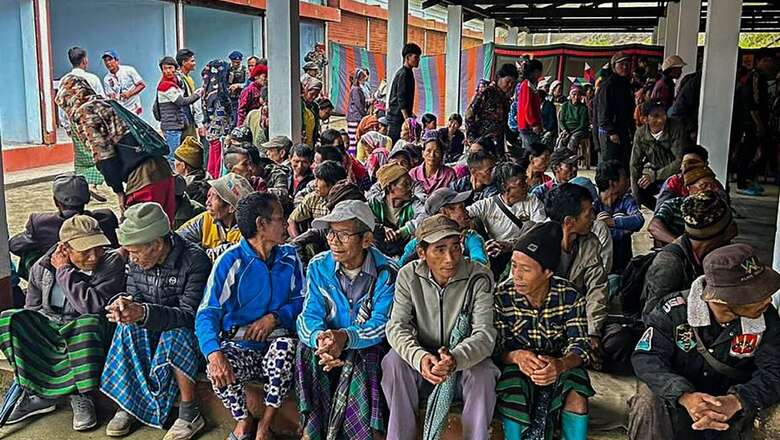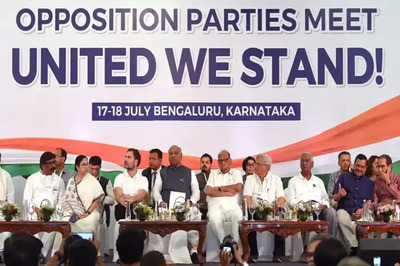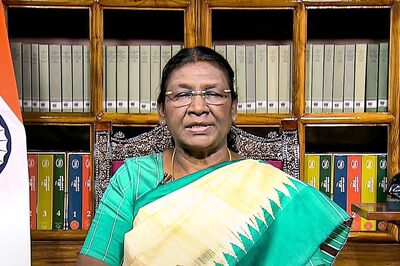
views
Union home minister Amit Shah on Thursday (February 8) said India has decided to scrap the ‘free movement regime’ along the 1,643-km Indo-Myanmar border, implemented almost five years ago to facilitate the people living in the border areas.
When was the ‘free movement regime’ with Myanmar implemented?
A free movement regime (FMR) between India and Myanmar was implemented in 2018. Under this, every member of the hill tribes – either a citizen of India or Myanmar and is a resident of an area within 16 km of the Indo-Myanmar border on both sides – can cross the border on producing a pass. This was issued by the competent authority and was valid for a year; availing this facility, a person could stay for up to two weeks per visit.
Why is the central government scrapping it?
The ministry of home affairs has decided to scrap the FMR between India and Myanmar due to internal security concerns.
In a tweet, Shah said: “The Ministry of Home Affairs (MHA) has decided that the Free Movement Regime (FMR) between India and Myanmar be scrapped to ensure the internal security of the country and to maintain the demographic structure of India’s North Eastern States bordering Myanmar. Since the Ministry of External Affairs is currently in the process of scrapping it, MHA has recommended the immediate suspension of the FMR.” (sic)
The ministry has also taken this step in view of the ongoing unrest since last year between Kuki and Meitei groups in Manipur. India has now decided to fence the border in view of the situation in the violence-hit northeastern state.
In his post on X, formerly Twitter, the home minister also said: “It has decided to construct a fence along the entire 1,643-kilometer-long Indo-Myanmar border. To facilitate better surveillance, a patrol track along the border will also be paved.” (sic)
He added: “Out of the total border length, a 10-km stretch in Moreh, Manipur, has already been fenced. Furthermore, two pilot projects of fencing through a Hybrid Surveillance System (HSS) are under execution. They will fence a stretch of 1 km each in Arunachal Pradesh and Manipur. Additionally, fence works covering approx 20 km in Manipur have also been approved, and the work will start soon.” (sic)
What does the Indo-Myanmar border look like?
India shares a 1,643-km border with Myanmar, which passes through the states of Arunachal Pradesh (520 km), Nagaland (215 km), Manipur (398 km) and Mizoram (510 km). Out of 1,643 km, the demarcation of 1,472 km has been completed.
An advanced smart fencing system of 100 km along this border is in the pipeline, so as to strengthen the existing surveillance system. The construction of fencing for a length of 10.023 km at Moreh has been awarded to the Border Roads Organisation (BRO). This work is in progress and 6.812 km has been fenced so far.
Here is all you need to know about the other border areas in India:
Indo-Pakistan border
India shares 3,323 km of its land border with Pakistan, which runs along Gujarat, Rajasthan, Punjab, Jammu and Kashmir and Ladakh. This border has varied terrain and distinct geographical features, and is characterised by infiltration attempts by terrorists and smuggling of arms, ammunition and contraband.
This is the most sensitive border for the central government, as well as for the armed forces due to the constant threat of cross-border terrorism. At least 736 border outposts (BOP) have been sanctioned along the Indo-Pakistan border, of which 675 have been completed.
To curb infiltration attempts and cross-border crimes, the Centre has sanctioned the installation of floodlights on a length of 2,078.80 km, of which 2,043.76 Km has been covered.
Indo-Bangladesh border
The Indian side of the Indo-Bangladesh border touches West Bengal (2,216.7 km), which shares the longest part of it. This is followed by Tripura (856 km), Meghalaya (443 km), Mizoram (318 km) and Assam (263 km).
The entire stretch consists of plains, riverine belts, hills and forests. It is heavily populated and cultivated right up to the border, which has limited fencing and, to curb infiltration, smuggling and other such activities, the government has undertaken the construction of fencing. This border poses a threat as some parts of it are porous and there are a number of reported cases of cross-border terrorism from these areas.
Indo-Nepal border
India and Nepal share a border of 1,751 km, which passes through Uttarakhand, Uttar Pradesh, Bihar, West Bengal and Sikkim. The main challenges are to check the misuse of the open border by terrorists and criminals for illegal activities. The government has approved construction and upgrade of roads (1,299.80 km in length) along the border in Uttarakhand, Uttar Pradesh and Bihar. A total of 539 BOPs have been established along the Indo-Nepal border, which is porous while some areas also have illegal movement.
Indo-China border
To strengthen the infrastructure along the all-important Indo-China border, the government has undertaken various infrastructure projects – construction of border roads, foot tracks, helipads, acclimatisation centres and establishment of BOPs in Ladakh, Himachal Pradesh, Uttarakhand, Sikkim and Arunachal Pradesh. China has, time and again, unilaterally tried to change the status quo that has led to a continuing dispute, while many of these border areas have also witnessed face-offs and fatal clashes.
Indo-Bhutan border
India and Bhutan share a border of 699 km, which passes through Assam, West Bengal, Arunachal Pradesh and Sikkim. The main challenge is the misuse of the open border by terrorists and criminals for illegal activities. There are 195 BOPs along this border.




















Comments
0 comment